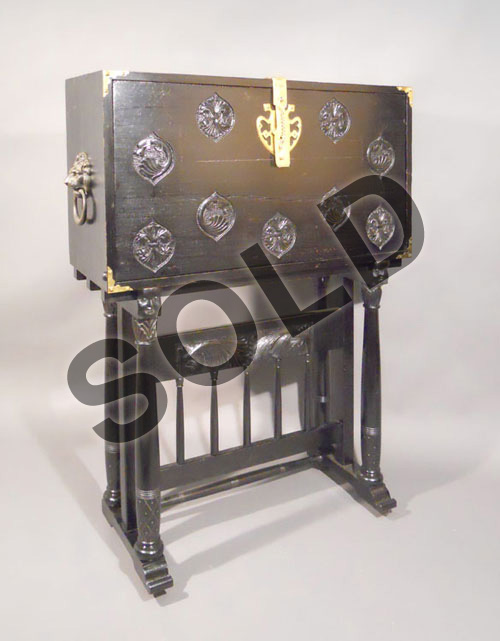
DESK ON STAND (VARGUENO) MADE FOR ALICE PIKE BARNEY
Oak with birds-eye maple interior and brass fittings
46 ¼” high, 34” wide, 12 ½” deep
| Alice Pike Barney (1857-1931) was the daughter of Samuel Napthali Pike, who made a fortune distilling Magnolia brand whiskey. He was also a patron of the arts in Cincinnati, where he built Pike’s Opera House. At the age of eighteen, Alice married a scion of the Barney & Smith [railroad] Car Company Albert Clifford Barney, who died in 1902 leaving Alice with enough money to fund her grand scheme for a Washington, DC studio and salon.
Although she had studied painting in Paris with such luminaries as James McNeil Whistler and Charles Émile Auguste Carolus-Duran, Alice’s ideas about art, decorative arts, and architecture were formed during her years in Cincinnati. She supported the McMiken School of Design founded by Henry and William Fry and Benn Pittman. Barney learned china painting from Pittman, who trained several Rookwood artists; but Pittman and the Frys also taught woodcarving. Cincinnati art furniture was built by men and often carved by socially prominent women like Barney and Rookwood’s founder Maria Longworth Nichols Storer. As a result of this early training, much of the furniture used in the Barney Studio House was designed by Barney and made in Cincinnati at the Fry/Pitman shops.


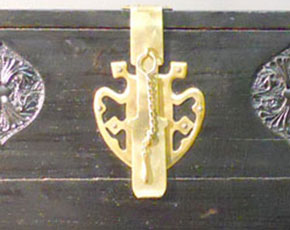
|
|

The Studio House at 2306 Massachusetts Avenue on Sheridan Circle is the result of collaboration between Barney and architect Waddy B. Wood. Completed in 1903, Barney used the house as a salon where she entertained politicians and artists such as Presidents Theodore Roosevelt and William Howard Taft, author Oliver Wendell Holmes, and dancer Anna Pavlova. Barney’s daughters inherited the house in 1931 and they gave it to the Smithsonian Institution in 1960. The Smithsonian sold the house and contents at auction in 1999. In 2001, the buildings were purchased for use as the Embassy of Latvia. The entire site (the Barney Studio House and the adjacent 1 ½ story stucco carriage house built in 1911) is listed in the D.C. Inventory of Historic Sites and the National Register of Historic Places.

The desk still bears the Smithsonian catalogue numbers. Its impeccable provenance is just part of what makes the desk a superb example of American Arts and Crafts movement production. The use of bird’s eye maple in the interior provides a brilliant contrast with the ebonized oak exterior while distinguishing the desk as a unique American production. The vargueno form exemplifies the influence of Spanish missions on American Arts and Crafts in general. The heraldic “crests” asymmetrically carved into the front as well as the flat brass corner mounts relate to Japanese lacquer boxes of the Meiji period; Japonisme was an aspect of the Aesthetic Movement, which continued to influence Arts and Crafts designers. The brass hasp escutcheon is reminiscent of the designs of Charles Robert Ashbee, the influential British Arts and Crafts architect and designer, who designed several writing desks based on the vargueno form.
|
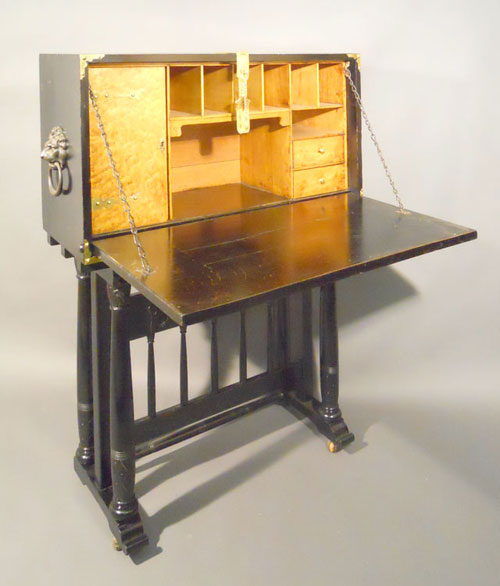
,
PAIR OF CHAIRS DESIGNED BY ALICE PIKE BARNEY
Oak, Circa 1902, Original Ebonized and Gilded Finish, Modern Cushions
57 ½” high, 26” wide, 16 ¾” deep

Alice Pike Barney designed this dramatic pair of chairs as part of the custom furniture she used for the Studio House on Sheridan Circle. Like many of the other studio furnishings, the Cincinnati Art Cravers probably made the chairs, which are part of a suite comprised of smaller, less dynamic chairs with the same carved and gilded sun on their crests.

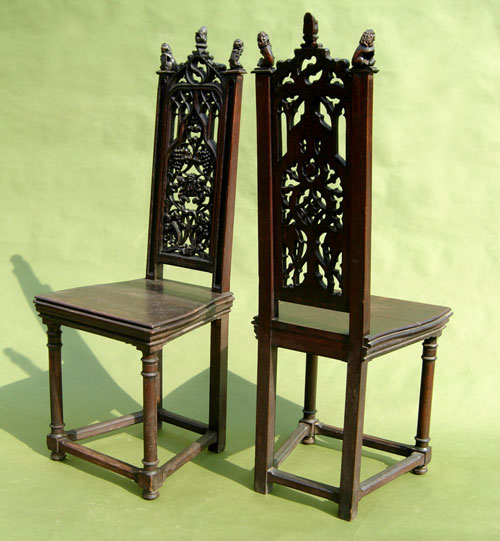
PAIR OF NEO-GOTHIC CHAIRS CARVED BY
THE CINCINNATI ART CARVERS
Oak, circa 1900, 49” high, 16 ½” wide, 18 ½” deep, original finish

Socialite and philanthropist Alice Pike Barney (1857-1931) is best remembered for her unsuccessful attempt to transform Washington, D. C. into the nation’s cultural capitol—her failure on that account is sadly demonstrated by the fate of the house she built in Sheridan Circle.
The Alice Pike Barney Studio House, built in 1902, was the second building on Sheridan Circle to be designed by one of Washington’s premiere architects Waddy B. Wood. In the early 20th century the building was used for salons, musical performances and theatrical productions. Among the many guests entertained by Alice Pike Barney were renowned artists, actors, diplomats and politicians – among them U.S. presidents Theodore Roosevelt and William Howard Taft. Barney furnished the house with lavish Arts and Crafts features like Mercer tiles and, most notably, furniture made by the Cincinnati Art Carvers. Barney was an accomplished painter and studied with Henry and William H. Fry and Benn Pitman in Cincinnati. These historically important interiors were largely in tact when Barney’s daughters donated Studio House to the Smithsonian Institution in 1961.
In 1999 the Smithsonian put the house up for sale and all the furnishings were auctioned off effectively destroying one of Washington’s and the nation’s most important Arts and Crafts interiors. The entire site (the Barney Studio House and the adjacent 1 ½ story stucco carriage house built in 1911) is now listed in the D.C. Inventory of Historic Sites and the National Register of Historic Places, and the present owner Latvia claims to have restored what was left of the interiors.
Our chairs were removed directly from the house and retain the Smithsonian catalogue numbers. Their style and quality is more comparable to Will Price’s Rose Valley furniture than to other Cincinnati art-carved furniture.
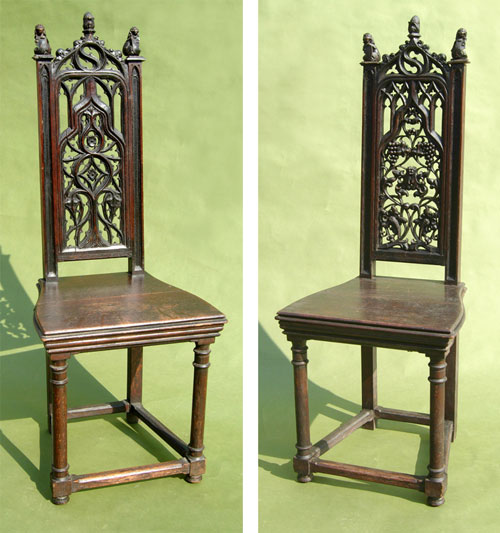
|











